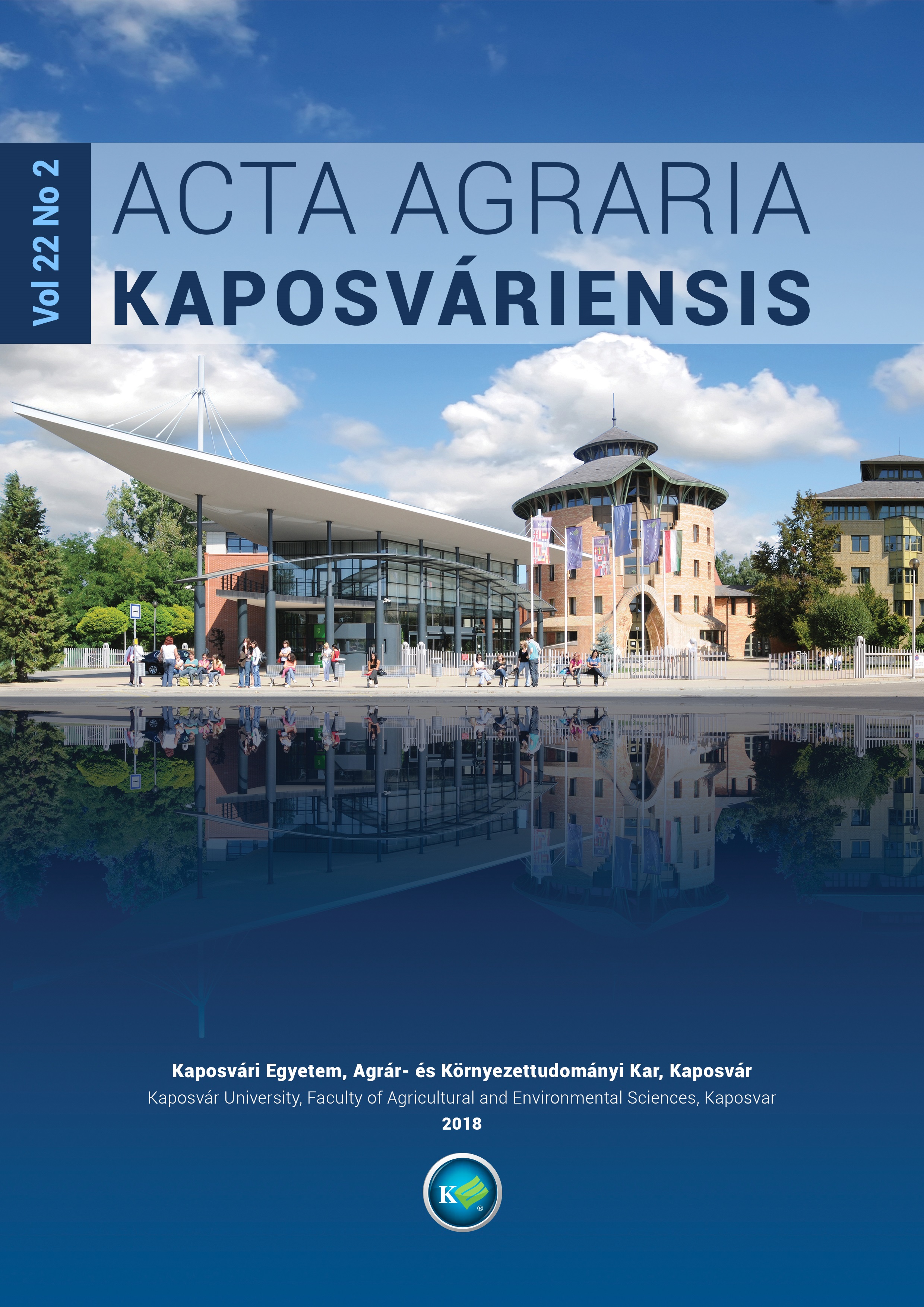Effect of ambient temperature and restricted feeding on the production of rabbit does and their kits
DOI:
https://doi.org/10.31914/aak.2272Kulcsszavak:
rabbit does, ambient temperature, restricted feeding, milk production, feed intake, water intakeAbsztrakt
Thirty-six lactating New Zealand White rabbit does were divided into 6 groups according to ambient temperature and feed intake. The does were kept at 20 °C during pregnancy and at kindling, then they were put into climatic chambers at temperatures of 5, 15, 23 or 30 °C. One part of the does were fed ad libitum (5A, 15A, 23A and 30A), two other groups were housed at 15 °C, but they received the same amount of pellet as the does' intake at 23 °C or 30 °C (15/23R and 15/30R). The litter sizes were equalized to seven. The weight of does, milk production, feed intake and water intake were recorded daily. Heat stress reduced milk yield (148, 152, 150 and 106 g/day), feed intake (287, 279, 260 and 179 g/day) and water intake (497, 512, 526 and 428 g/day), but increased the water/feed ratio (1.73, 1.84, 2.02 and 2.39) in the groups of 5A, 15A, 23A and 30A, respectively. Body weight of does decreased at 23 °C and 30 °C by 5.6% and 8.5%, respectively, compared to 15 °C. Comparing the groups of rabbits kept at 23 °C and 30 °C fed ad libitum (23A and 30A) and the data obtained for groups of 15/23R and 15/30R it was observed that the milk yield decreased by 8.0% and 2.5%, water intake increased by 8.6 and 13.3%, and the feed/water ratio was higher by 0.18 and 0.18, respectively. The effect of heat stress was less significant on kits than on does. It can be concluded that the high ambient temperature mainly affected the milk production through the reduction of feed intake.






